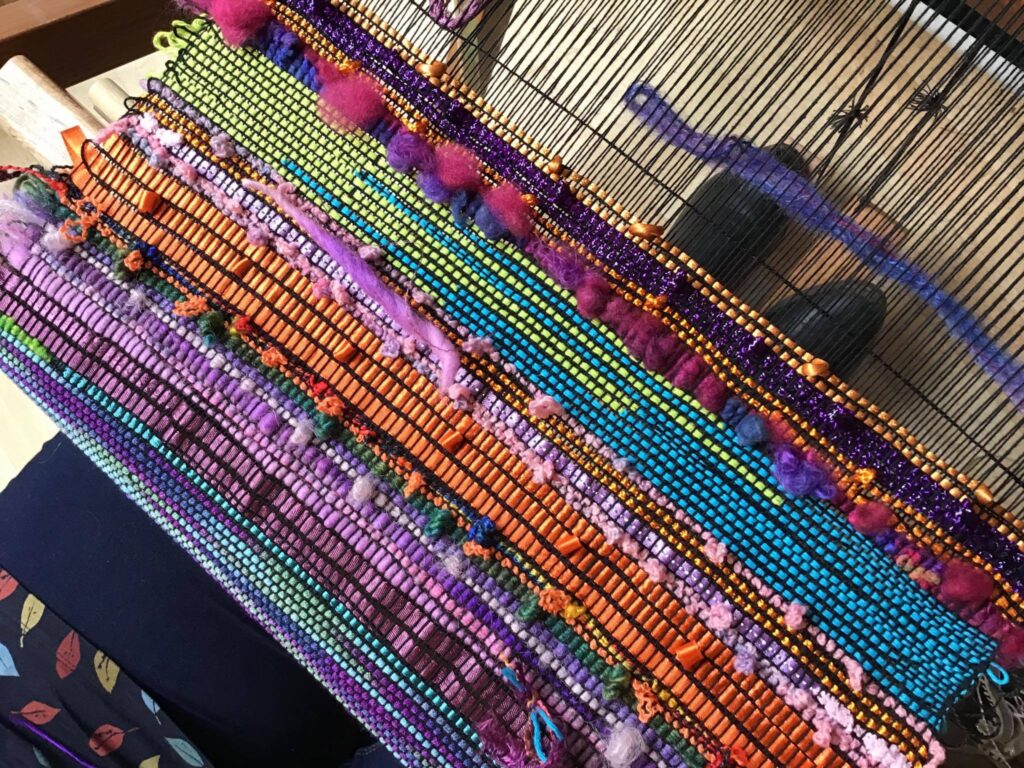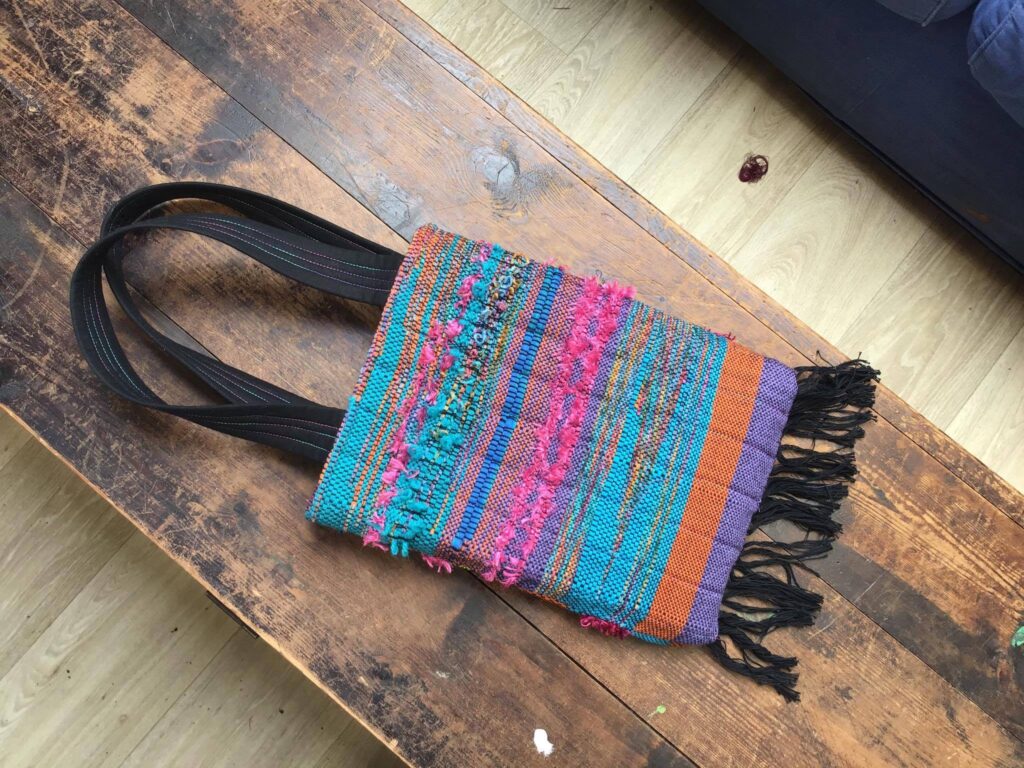
A common question that people have when they first come across SAORI is:
“Why does it have four principles?”
To answer this question, we have to understand what a principle is.
A principle is a truth that serves as a foundation (or part of a foundation) for a practice, guiding how that practice is performed and understood. SAORI weaving sits apart from other forms of weaving because of its four principles, which act to define it and guide SAORI practitioners in their weaving. In this series, we will be taking a look at the four principles of SAORI and considering how each one relates to weaving and beyond.

The first principle of SAORI is “Consider the difference between human and machine”. Although weaving makes use of a machine – the loom – two people can weave using the very same loom and produce vastly different pieces. This is because while machines are fixed designs and obey instruction, humans are all products of their individual life stories and interpret information and instructions in an infinite number of different ways. The loom becomes an extension of the human form, but it does not have ideas; it follows them. The loom translates ideas into material form, but it does not design anything.
Each piece produced on a SAORI loom is unique. It could only have been created by that individual in that moment in time. This is because of another difference between humans and machines; humans are changeable, while machines are not. Even in the time taken to weave a single piece, your weaving may take on a different direction from that which you originally planned. This is the beauty of improvisation: it provides surprises.
Humans have used machines ever since civilisation began, yet only recently have machines begun to operate without our constant input or instruction. Freed from the changeable whims and ideas of humans, factory machines churn out infinite copies of identical products with few mistakes. Yet, the appeal of the imperfect, improvised, handmade item lives on – just look at how many of us have soothed ourselves through lockdown by learning or practising handicrafts.
Humans do not like to think of themselves as machines, simply here to follow instructions and work. Creativity shows us that we do not have to act as machines, but that we can celebrate our imperfections and individualities as humans. SAORI weaving encourages us to tap into our individual humanity. Hence the meaning of the first principle.
For more information about SAORI weaving and its history, visit our About page.
by Jessica Edney


